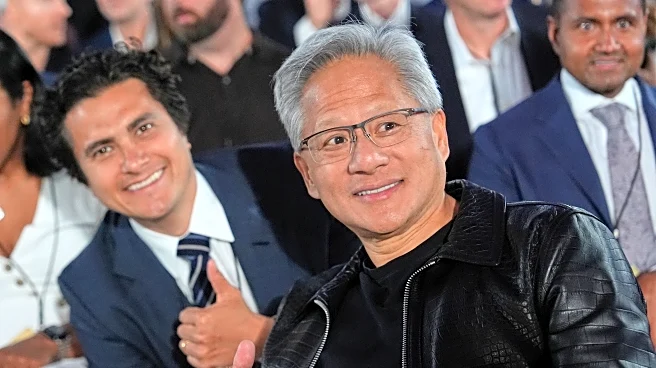Rapid Read • 8 min read
The U.S. Departments of Labor, Commerce, and Education have released a comprehensive report titled 'America’s Talent Strategy: Equipping American Workers for the Golden Age.' This report outlines a strategic plan to transform the federal government's approach to workforce development, aligning with President Trump's America First economic agenda. The strategy is built on five pillars: demand-driven strategies, worker mobility, integrated systems, accountability, and flexibility and innovation. It aims to empower American workers by expanding work-based learning models, enhancing AI readiness, and streamlining federal workforce programs. Secretaries Lori Chavez-DeRemer, Howard Lutnick, and Linda McMahon emphasized the importance of this strategy in preparing the workforce for an AI-driven economy and positioning the U.S. as a global economic leader.
AD
This strategy is significant as it seeks to address the evolving needs of the American workforce in the face of technological advancements and global economic shifts. By focusing on AI literacy and reskilling, the plan aims to ensure that American workers are equipped to fill in-demand jobs, thereby reducing unemployment and boosting economic growth. The emphasis on accountability and transparency in federally funded programs is expected to enhance the effectiveness of workforce development initiatives. This approach could lead to a more skilled labor force, driving innovation and maintaining the U.S.'s competitive edge in the global market.
The implementation of this strategy will involve collaboration across various federal agencies to streamline workforce development programs and integrate systems. The focus will be on creating new career pathways and expanding access to innovative workforce-based programs. As these initiatives roll out, stakeholders including businesses, educational institutions, and state governments will likely play a crucial role in supporting and adapting to these changes. Monitoring and measuring the success of these programs will be essential to ensure they meet the intended goals of connecting Americans with good-paying jobs.
The strategy's focus on AI-driven economy preparation highlights the broader implications of technological advancements on the workforce. As AI continues to transform industries, the need for reskilling and adapting to new job roles becomes increasingly critical. This initiative may also influence educational reforms, encouraging institutions to align curricula with industry needs and technological trends. The long-term impact could see a shift in how education and career development are approached, fostering a culture of continuous learning and adaptability.
AD
More Stories You Might Enjoy











